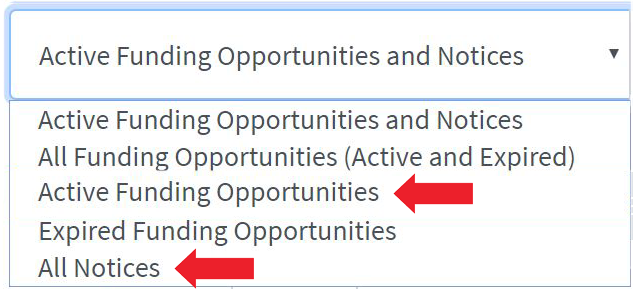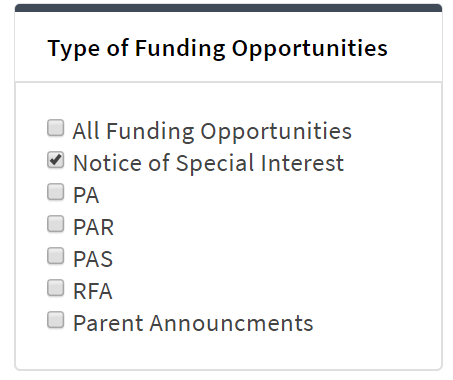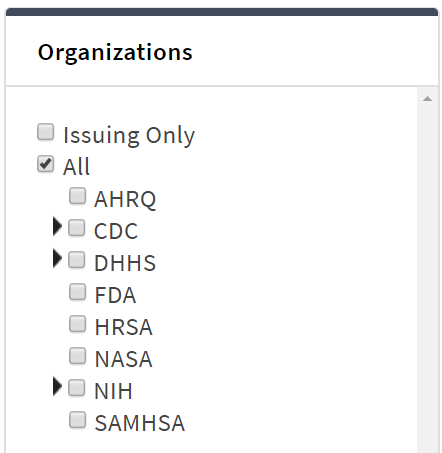Submission Deadline: 03/09/20
The National Academies of Sciences, Engineering, and Medicine is issuing a call for white papers in support of an ongoing study activity to assess existing and novel electric power and energy (P&E) technologies to support Army multi-domain operations (MDO) in the 2035 environment. This call for white papers is soliciting input on candidate P&E technologies (existing or under development) with the potential to achieve operational readiness to support Army MDO in 2035. The white papers will serve as the primary data-gathering effort to inform the larger study report. The authors of the most promising white papers will be invited to join a public forum in May to discuss their ideas with the study committee
Army Modernization Strategy and Multi-Domain Operations
The Army Modernization Strategy (AMS) describes how the Army will transform into a multi-domain operations (MDO) force by 2035 to meet its enduring responsibility as part of the Joint Force to provide for the defense of the United States. The essence of Army’s MDO concept is to support the Joint Force in the rapid and continuous integration of all domains of warfare – land, sea, air, space, and cyberspace – to deter short of conflict but fight and win if deterrence fails. The enabling technology for multi-domain operations will be advanced communications and information processing technology which will place new demands on the Army’s deployed P&E infrastructure to ensure that it can meet the demands of the MDO environment in 2035.
The tenets of MDO create significant performance challenges for several technologies over the next fifteen years. Calibrated force postures, multi-domain formations, and the ability to rapidly converge effects from multiple domains will require a highly integrated and rapidly reconfigurable force that can execute and sustain complex operations with great speed and precision. Rapidly evolving technologies, especially information technologies and those that enable and sustain them, particularly power and energy (P&E), will be fundamental to achieving these goals. The purpose of this call is to solicit white papers outlining feasible and practical technology options that could address potential P&E needs of the Army as it executes its MDO vision in 2035.
The Army’s MDO strategic goals and the future importance of sensing and information technologies
The continuous integration of all domains of warfare demands a proliferation of sensors and intelligent devices, supported with increased communication bandwidth and high-speed processing of data sets into actionable information for use at all operational levels. Evolving 5G technologies in the commercial world can help with these technical challenges and offer a good pacing technology for assessment. However, commercial technology and infrastructure development will not fully satisfy the Army’s unique operational challenges, which require worldwide deployability and functionality under degraded/hostile conditions.
For example, little or no ground-based commercial communications infrastructure may be available within the battlespace; in future operations, even space-based networks may be challenged. This circumstance requires the Army to have a self-contained, mobile, and resilient integrated sensor, communications and information infrastructure. Furthermore, complex battlespace environments create significant technical challenges for modern cellular network technologies. For example, the Army typically fights in complex terrain while experiencing variable climates such as rain, snow, hail, dust, fog, etc. Emerging 5G communications, which promise disruptive bandwidth, are relatively short range and particularly sensitive to signal strength and environmental conditions (to include weather and terrain). These limitations can require increases in the density of nodes and signal strength; longer transmission duration; and proliferation of mobile processing stations. These trends alone will challenge mobile power and energy capabilities in terms of both power demand and energy endurance.
Mobile P&E to support network-enabled MDO
Mobile P&E is fundamental to all Army capabilities; however, the P&E that support communications and information needs varies significantly depending upon the use case. During maneuver, the power plants for the Abrams and many other ground combat vehicles expend a small fraction of their energy on communications and processing. Technologies being developed to support onboard power needs for mobility and lethality over the next 15 years should be more than adequate to meet information processing and communication needs when underway. However, at times ground combat vehicles will enter “silent watch” which requires then to minimize all acoustic and infrared signal emissions. This in turn normally requires them to remain stationary and operate without the use of their main or auxiliary engines. As a result, a platform’s information and communications systems will need to operate without the main engine output.
Meanwhile, dismounted soldiers, small electric and hybrid drones, micro-autonomous sensors, systems, and communication nodes, autonomous ground vehicles, manned vehicles on “silent watch,” and mobile command posts and data centers each will require significant improvement in P&E technology over the next 15 years to support network-enabled MDO. Moreover, the ability to operate mobile command posts and the proliferation of persistent sensors, processors, and transceivers at the forward edge of the battlespace represent an important new focus area that supplements past soldier, platform (e.g. vehicle or drones), and forward operating base use cases.
In the past, P&E performance parameters were generated as an afterthought to new technology aspirations. Twenty-first century capabilities, however, require more sophisticated treatment of energy as an integral component within the system design process. Sensing, processing, and communicating technologies, for example, fundamentally involve the physics and management of energy. How effectively can a sensor distinguish electromagnetic or other signals from noise; convert the information into usable form; and securely transmit the signal to become integrated into the operational picture? Not only energy density but also power management, conversion efficiency, EM radiation and coupling efficiencies, environmental tolerance and reliability are just a few energy attributes that are fundamental to technology performance that will support MDO.
Multi-Domain Operations represents a new warfighting concept for which we lack field data regarding key performance parameters and constraints. The present study represents an opportunity to inform “the art of the possible”, with an emphasis on what is practical and feasible by identifying technologies that could significantly contribute to envisioned operations and feasibly could be made available. To that end, this white paper call will take a technology push approach to future mobile P&E technologies, especially taking account of the opportunities and demands of distributed information technologies (such as 5G) within the adverse environments the Army would be expected to fight.
Two-tiered approach to estimating P&E technology performance for distributed information enabled MDO
For this call for white papers, all P&E technologies will be considered; however, it is crucial to keep in mind that the emphasis will be on those most practical and feasible technologies relevant for sustaining the support of distributed information capabilities associated with MDO. To effectively evaluate the performance headroom of P&E technologies out to the year 2035, this call for white papers will take a two-tiered approach to assessment. The first-tier involves P&E technologies that would achieve a five-year system demonstration from TRL 5-7 to TRL 7-8, then ten years to acquire an operational system by 2035. The second-tier sources would deliver a concept to feasibility demonstration from TRL 4-6 to TRL 6-8 in fifteen years with an operational system acquired sometime after the demo. The metrics used to assess technology and system performance will include specific energy and power output, efficiency, weight, volume, endurance (time to refuel, recharge, or replace), durability (performance in austere or hazardous environments or under shock or damage), vulnerability to attack and disruption, portability/mobility, supply and maintenance concerns (e.g. challenges of material and fuel sourcing and rarity of materials), investment and unit cost, safety issues, personnel training requirements, and policy and regulatory concerns. Physics and engineering principles will be used to judge the credibility of the P&E sources for each tier. To be considered, detailed engineering and system descriptions, which support the performance characteristics of each P&E source will be required.
White Paper Guidelines – Summary
The white papers should describe and evaluate existing or emerging P&E technologies and technical solutions that are feasible and practical to support Army P&E needs for MDO in the 2035 timeframe. The demands for distributed information technologies should be considered as a pacing technology but responses need not be limited to the specifics of systems available today (such as 5G); they should include alternative communications technologies that might also support Army MDO operations as described in the previous section. Papers may and should to the extent possible, consider all relevant P&E aspects of the architecture, including energy storage, conversion, transmission, and relay requirements, and power management technologies. Energy/power sources to be considered can range from as little as two watt systems, for individual soldier platforms and distributed and proliferated sensors, processors and transceivers in the battlespace, to more than 10 megawatt systems for forward and remote operating bases. Each technology or technical solution should be categorized into one of the following categories:
- Tier 1 – System demonstration achievable within 5 years from TRL 5-7 and TRL 7-8, and an operational system acquirable by 2035.
- Tier 2 – Concept or System demonstration achievable in 15 years with an estimate of the additional time required for an acquired system
The white papers should assess the following parameters for each technology or technical solution presented: specific energy and power output, efficiency, weight, volume, endurance (time to refuel, recharge, or replace), durability (performance in austere or hazardous environments or under shock or damage), vulnerability to attack and disruption, portability/mobility, supply and maintenance concerns (e.g. challenges of material and fuel sourcing and rarity of materials), investment and unit cost, safety issues, personnel training requirements, and policy and regulatory concerns. The white papers may also offer additional or alternative assessment parameters that are critical or otherwise relevant but not listed here.
Selection Process and Next Steps
White papers will be selected on their level of detail and analysis and the extent to which they meet the parameters provided above. In April, the white paper authors selected to advance will be provided with additional details and parameters regarding the MDO operating environment in 2035 to adapt their proposals and presentations at the public forum to be held on May 18-21, 2020. Selected white paper authors will be asked to provide presentations and engage in dialogue with the study committee at the May forum.
The white paper submissions will be evaluated by the study committee and used to inform report content. The authors of the most promising white papers will be invited to participate in a public forum to discuss their ideas with the committee and engage with the authors of other selected white papers. The papers and discussions with paper authors will provide the primary source of data gathering for the report findings, conclusions, and recommendations.
Information gathered will be used by the committee solely to inform this project and the study report. However, per the requirements established in the Federal Advisory Committee Act, to which this effort and committee is subject, all white papers will be collected in a Public Access File (PAF). Materials contained within the PAF are subject to release per the Freedom of Information Act (FOIA). Please do not include any proprietary information in your responses. Responses must be Distribution A. This activity is unclassified.
Submission Formatting and Guidelines
- Papers should be no longer than 10 pages, double spaced, including figures
- Text should be in size 12 Times New Roman font, with standard one-inch margins
- Papers should include a cover page (not included in the 10 page limit) with the paper title, the authors’ names, times and organizational affiliations (if applicable)
- If the paper includes citations, then standard Chicago Style or APA format applies
White papers should be submitted HERE no later than 5:00PM EST on 03/09/2020
If your white paper is selected by the committee to be presented at the public forum on May 18-21, 2020 you will be contacted via the email address entered on your submission form.
Please contact Steven Darbes (sdarbes@nas.edu) or Aanika Senn (ASenn@nas.edu) with any questions regarding the call for white papers or the Powering the U.S. Army of the Future study.
Additional Information
The work of the committee is overseeing by the Board on Army Research and Development (BOARD) at the National Academies of Sciences, Engineering, and Medicine. The BOARD provides project oversight and sponsor engagement for a portfolio of studies, workshops, forums, and roundtables in support of the U.S. Army. The U.S. Army turns to us for independent advice on topics related to research, development, and application of science and technology in support of military matters. Our board members are widely recognized industry, academic, and former military experts. See their website for more information.
This study was sponsored by the Office of the Deputy Assistant Secretary of the Army (Research and Technology)








